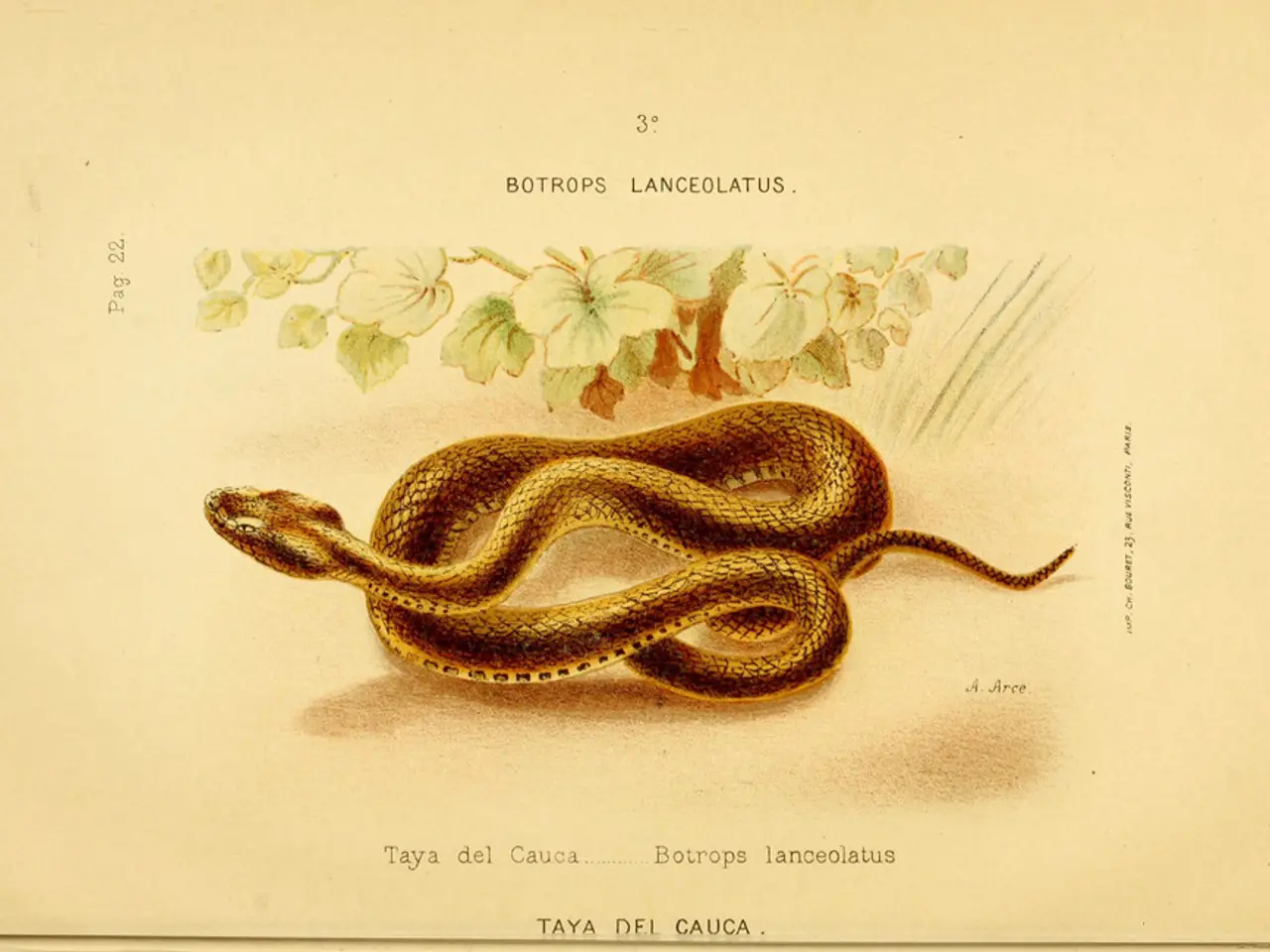Researcher Regularly Walks Over Venomous Serpents in Bid to Enhance Anti-Venom Treatments, Possibly Saving Future Lives
In a study originally published in the journal Scientific Reports and later retracted due to a "communication error" by the ethics committee, researcher João Miguel Alves-Nunes sought to understand the factors influencing the defensive behavior of the jararaca, a venomous pit viper commonly found in South America.
The study focused on the snakes' defensive behaviors instead of their venom and antivenom, providing valuable insights into the defensive behavior of the jararaca. The research involved repeatedly exposing jararaca snakes to threats and observing their defensive responses.
The results showed that the defensive behavior of the jararaca is influenced by a combination of intrinsic factors such as size, sex, and life stage, as well as environmental factors like temperature and time of day. Specifically, smaller snakes, particularly newborn females, show a higher propensity to bite defensively. Additionally, warmer temperatures increase the likelihood of biting, making the snakes more defensive during hotter periods. Females tend to be more aggressive and prone to bite, particularly when gravid or in certain life stages.
The venom of the jararaca causes excruciating pain, life-threatening bleeding, and kidney failure, making understanding the factors influencing their defensive behavior crucial for reducing the risk of snakebites. Snakebites are a high-priority neglected tropical disease, according to the World Health Organization.
The researchers used a booted foot instead of a metal hook to touch and press the snake's body against the ground to protect the snakes. Despite the retraction, the results of the study still provide valuable insights into the defensive behavior of the jararaca.
It is important to note that the retraction did not involve data fabrication, analytical fraud, or experimental error. Researcher João Miguel Alves-Nunes was not bitten by a jararaca during the study, but had a training incident with a rattlesnake.
As we continue to learn more about the jararaca and other venomous snakes, it is essential to prioritise research that helps us understand their behaviors and find ways to reduce the risk of encounters leading to bites. This study, while retracted, provides a foundation for further research in this area.
- The study focused on the jararaca's defensive behaviors in ecology, offering insights into animal behavior without directly researching their venom and antivenom.
- Science and health professionals, including those involved in medical-conditions, health-and-wellness, fitness-and-exercise, must consider the defensive behavior of venomous snakes like the jararaca, given the serious health impacts of their venom.
- Understanding factors influencing the defensive behavior of the jararaca, such as size, sex, life stage, temperature, and time of day, can aid in developing strategies to minimize risks of snakebites.
- The retraction of the study on jararaca defense mechanisms doesn't imply data fabrication, analytical fraud, or experimental error, but rather a communication issue by the ethics committee.
- The findings from the study, while facing retraction, offer a starting point for future research and contribute to expanding our knowledge about the defensive behavior of venomous snakes in the environment.
- Researchers like João Miguel Alves-Nunes should continue prioritizing studies on venomous animals like the jararaca, as understanding their behaviors is crucial for promoting health, wellness, and safety for humans and wildlife.




